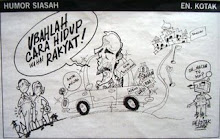Tuesday, November 11, 2008
KERJAYA PILIHAN MINGGU INI : History of Quantity Surveying ( Kursus Paling Laku di Pasaran )
The quantity surveyor emerged in England at the beginning of the nineteenth century, although the firm of Henry Cooper and Sons of Reading was established as early as 1785. Prior to the first recorded usage of the term "quantity surveyor" in 1859, the terms "measurer", "custom surveyor" or "surveyor" were used. In those early days the quantity surveyor acted for the master tradesmen, measuring the work after completion and frequently submitting partisan Final Accounts to the building owner. As a direct result of these activities it increasingly became the practice of building owners to have work executed under contract and to call for tenders before any work was undertaken. A procedure therefore developed whereby building owners would approach an architect to design a building. Drawings and specifications were distributed to selected master builders, who would then submit tenders for the total price rather than a collection of prices from master tradesmen. The task of arriving at an accurate estimate of cost or tender can be carried out in only one way - that of measuring the quantities of all materials and labour necessary to complete the work, i.e. preparing bills of quantities. As each builder had to prepare his own bills of quantities for each project, they realised that it would be more economical for them as a group to employ one surveyor to measure quantities for them all. They would thus share the cost of the surveyor, obtain an identical Bill of Quantities which ensured that they would all be tendering on the same basis. The building owner subsequently realised that it would be to his personal advantage to appoint and pay the fees of the quantity surveyor. Thus the independent professional quantity surveyor gained consultant status. http://www.asaqs.co.za/public/history.html
Subscribe to:
Post Comments (Atom)




















1 comment:
aku bangga menjagi penuntut dalam bidang ini..hahahaha
Post a Comment